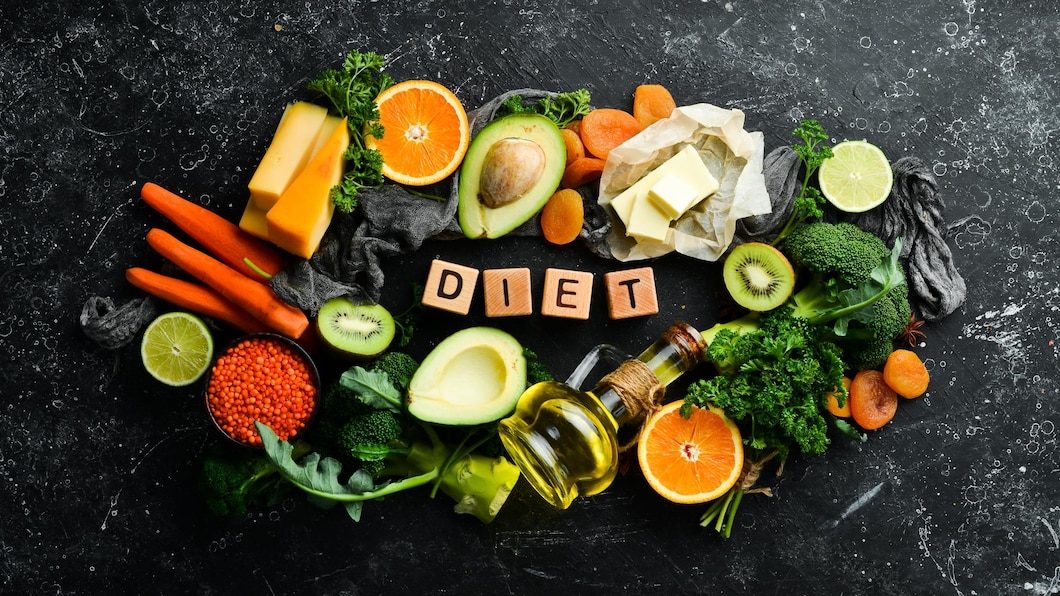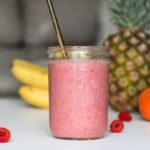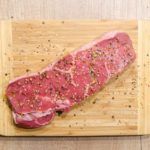Low Histamine Diet: Your Ultimate Guide for Relief

Have you ever felt a wave of discomfort after eating certain foods? This could be a sign of histamine intolerance. Histamine intolerance occurs when your body has difficulty breaking down histamine, a chemical involved in immune response. This can lead to a cascade of unpleasant symptoms affecting your gut, skin, and even brain.
If you suspect histamine intolerance, a low-histamine diet can be a game-changer. By limiting histamine intake and supporting your body’s natural breakdown processes, you can experience significant relief from symptoms like:
- Digestive issues (diarrhea, bloating, nausea)
- Headaches and migraines
- Skin problems (rash, hives, itching)
- Runny nose, congestion
- Fatigue and dizziness
This guide is your one-stop shop for navigating a low-histamine diet. We’ll delve into the science behind histamine intolerance, explore a comprehensive food list, and provide tips for making delicious and effective dietary changes. Get ready to feel your best and take back control of your health!
Also Read: Benefits of Drinking Water Early Morning
Understanding Histamine
Before we dive into the low-histamine diet, let’s understand the key player: histamine. Histamine is a chemical compound naturally produced by cells in our body, particularly mast cells. It plays a vital role in various bodily functions, including:
Immune response: Histamine helps us fight off infections by triggering inflammation and increasing blood flow to the affected area. This is why we experience allergy symptoms like runny nose and itchy eyes – histamine is mobilizing our defenses.
Digestion: Histamine aids in stomach acid production and regulates intestinal movement.
Brain function: Histamine acts as a neurotransmitter, involved in regulating sleep-wake cycles, learning, and memory.
So, when does histamine become a foe? This happens in histamine intolerance, a condition distinct from allergies.
Allergies: In allergies, our immune system mistakenly identifies harmless substances as threats, triggering a histamine release. Antihistamines are effective here because they block histamine receptors, preventing the allergic reaction.
Histamine Intolerance: Here, the issue lies not in immune response but in histamine breakdown. Our bodies primarily break down histamine with an enzyme called diamine oxidase (DAO). If DAO levels are low, or we consume excessive histamine, it can build up and trigger various symptoms.
Common Symptoms of Histamine Intolerance:
Histamine intolerance can manifest in a multitude of ways, affecting different bodily systems. Here are some common symptoms to watch out for:
- Digestive: Upset stomach, diarrhea, bloating, nausea, vomiting
- Skin: Rashes, hives, itching, flushing
- Headaches and migraines
- Neurological: Fatigue, dizziness, insomnia, brain fog
- Respiratory: Runny nose, congestion, shortness of breath
- Menstrual irregularities
It’s important to note that these symptoms can also occur with other conditions. Consulting a healthcare professional for proper diagnosis is crucial.
The Low-Histamine Diet
The low-histamine diet is a strategic approach to managing histamine intolerance. Its two main goals are:
- Reduce histamine intake: By limiting foods naturally high in histamine, we prevent overwhelming our system.
- Support DAO production: Certain foods and lifestyle practices can help our bodies produce more DAO, the enzyme responsible for breaking down histamine.
Let’s explore the two main categories of food within this dietary framework:
High Histamine Foods:
- Aged or fermented foods: These include cheese (except some fresh varieties), cured meats, fermented vegetables (sauerkraut, kimchi), kombucha, and aged wines.
- Certain fruits and vegetables: Avocados, tomatoes, spinach, citrus fruits, pineapples, bananas, and some berries can be high in histamine.
- Alcohol and certain beverages: Alcoholic drinks, particularly red wine, and some caffeinated beverages like coffee and black tea can trigger symptoms.
- Processed foods: Often loaded with additives and preservatives that can hinder DAO function and worsen intolerance.
Low Histamine Foods:
- Fresh meats and poultry: Chicken, turkey, fish (except some varieties like tuna and mackerel) are generally tolerated well.
- Fresh eggs: While some may react to eggs, fresh eggs can be a good source of protein on a low-histamine diet.
- Most vegetables (except for listed high histamine ones): Leafy greens, broccoli, carrots, cucumbers, and many others are typically low in histamine.
- Fresh fruits (except for listed high histamine ones): Apples, melons, grapes, and some berries can be good histamine-low options.
- Non-dairy milks: Almond milk, rice milk, and coconut milk are good alternatives to dairy.
Freshness is Key: Histamine levels increase with storage time. Opting for fresh produce and consuming foods soon after purchase can significantly reduce histamine content.
Food Preparation Matters: Cooking methods can also impact histamine levels. Steaming, boiling, and poaching are generally considered histamine-reducing methods compared to frying or grilling.
Also Read: Key Rules to Lose Belly Fat in Winters
Your Low Histamine Diet Roadmap

The low-histamine diet is a journey, not a destination. To empower you on this path, let’s explore a three-phase roadmap:
Phase 1: Elimination (2-4 Weeks)
This initial phase focuses on identifying your triggers by eliminating high-histamine foods for a period of 2-4 weeks. Here’s how to navigate it:
Go Cold Turkey: Strictly avoid all high-histamine foods listed previously. This may feel restrictive initially, but it’s crucial for establishing a baseline and identifying triggers.
Sample Meal Plan:
- Breakfast: Scrambled eggs with spinach and gluten-free toast, berries with almond milk
- Lunch: Grilled chicken salad with olive oil dressing, brown rice
- Dinner: Baked cod with roasted vegetables, quinoa
- Snacks: Apple slices with almond butter, banana with low-histamine nut butter (like sunflower seed butter)
Craving Busters: Cravings are common during elimination. Here are some tips:
- Plan ahead: Stock your pantry with low-histamine snacks to avoid temptation.
- Distract yourself: Engage in activities you enjoy to take your mind off cravings.
- Find low-histamine alternatives: Experiment with low-histamine versions of your favorite foods. For example, use coconut milk instead of dairy in creamy dishes.
Phase 2: Reintroduction (Gradual)
After the elimination phase, it’s time to identify your individual triggers. Reintroduce high-histamine foods gradually, one at a time, in small quantities. Keep a detailed food journal during this phase, noting down the food reintroduced, quantity, and any reactions experienced (digestive issues, headaches, etc.). This will help you pinpoint your specific food sensitivities.
Slow and Steady: Reintroduce only one high-histamine food every few days. Monitor your body’s response for at least 24-48 hours before introducing another.
Food Journal Power: A food journal is your best friend during reintroduction. Document everything you eat and any symptoms you experience.
- Start small: Begin with a very small portion of the reintroduced food.
- Listen to your body: Pay close attention to how you feel after consuming the food. Even mild discomfort signifies a reaction.
- Patience is key: Reintroduction can be a slow process. Be patient and listen to your body’s signals.
Phase 3: Maintenance (Long-Term Management)
Based on your reintroduction phase findings, you can now create a personalized low-histamine diet that caters to your specific needs. This is where long-term success begins:
Your Personalized Plate: Develop a sustainable eating pattern that incorporates low-histamine foods you enjoy and excludes your identified triggers.
Sample Low-Histamine Recipes: Explore cookbooks and websites dedicated to low-histamine recipes. This will make sticking to the diet more enjoyable and prevent boredom.
- Manage Stress: Stress can worsen histamine intolerance symptoms. Practice relaxation techniques like yoga or meditation.
- Quality Sleep: Aim for 7-8 hours of quality sleep each night. Sleep deprivation can disrupt histamine regulation.
- Regular Exercise: Regular physical activity can improve overall health and may help manage histamine levels.
Remember, the low-histamine diet is an ongoing journey. By following this roadmap and making adjustments based on your individual needs, you can effectively manage histamine intolerance and reclaim your well-being.
Also Read: Top Winter Detox Superfoods
In Crux
The low-histamine diet can be a powerful tool for managing histamine intolerance and reclaiming your quality of life. By reducing your histamine intake and supporting your body’s natural breakdown processes, you can experience significant relief from a wide range of symptoms.
This journey of discovery may require some initial effort, but the potential rewards are vast. Imagine a life free from constant discomfort, where you can enjoy a wider variety of low-histamine foods and activities you love.
Remember, the low-histamine diet is a personalized roadmap, not a one-size-fits-all approach. Embrace the process of experimentation and customization. With dedication and the guidance outlined in this blog, you can effectively manage histamine intolerance and create a path towards a healthier, happier you.
How much did you like Our detailed Guide to Low Histamine Diet: Manage Symptoms? Please share your view in the comment box. Also, please share these Blogs with your friends on social media.
Recommended











